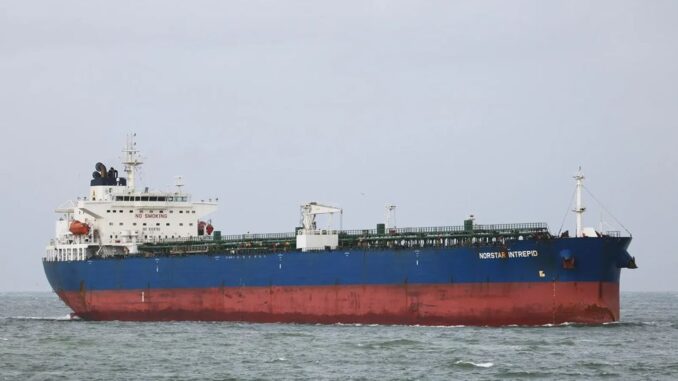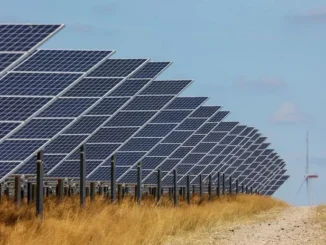
As Europe grapples with escalating geopolitical tensions, the European Union is intensifying efforts to tighten sanctions on Russian energy exports. A key focus has shifted to diesel fuel refined from Russian crude in third countries, such as India and Turkey, which has continued to flow into European markets despite existing restrictions. The question looms: Can Europe effectively block these imports without triggering a supply crunch that could drive up prices and disrupt economies?
The Current Landscape of Russian Diesel in Europe
Are you from California or New York and need a tax break?
Since the onset of the Russia-Ukraine conflict in 2022, Europe has implemented broad sanctions on Russian oil and gas to curb Moscow’s war funding. However, a loophole has allowed refiners in non-sanctioned countries to process discounted Russian crude and export the resulting diesel back to Europe. Countries like India, which now imports around 40% of its crude from Russia (up from just 2% pre-war), have become major hubs for this trade. Indian refineries process Russian oil into diesel and gasoline, with a significant portion—up to 40% of Europe’s diesel needs pre-sanctions—being re-exported to the EU and UK.
This arrangement has helped Europe maintain supply stability while adhering to the “spirit” of sanctions, but it undermines the goal of reducing Russia’s revenues. Tracking the origin of refined diesel is notoriously difficult, as it often involves co-processing with crude from multiple sources, leaving regulators with incomplete data and enforcement challenges.
To close this gap, proposals include banning imports from countries known to handle Russian crude, potentially forcing nations like India to halt purchases or face secondary measures.
Potential Impacts of Stricter Sanctions
Enforcing a full block on Russian-linked diesel by early 2026 could reshape global trade flows. Europe’s domestic refining capacity is in decline, with closures like the UK’s Prax Lindsey site exacerbating vulnerabilities amid tighter emissions regulations and weak margins.
Diesel demand remains robust, powering essential sectors like logistics, agriculture, and heavy industry, where alternatives like electrification are not yet scalable.If implemented, Russian diesel could be rerouted to markets in Latin America or Asia, while Europe turns to increased imports from the U.S., Saudi Arabia, or East Asia. However, this shift risks higher freight costs, wider arbitrage spreads, and potential shortages, especially if shipping availability tightens.
Analysts warn that diesel markets are highly adaptable; past sanctions have shown traders finding workarounds through longer routes, altered paperwork, and relabeling.
Adding complexity, U.S. policy under a potential Trump administration could amplify pressure. Threats of 100% secondary tariffs on countries buying Russian oil above the G7’s $60-per-barrel cap might disrupt 1.5-2 million barrels per day of supply, pushing Brent crude prices to $90-100 per barrel by mid-2025.
For India, a key player in refining Russian crude for Europe, such sanctions could force a pivot to pricier alternatives from Saudi Arabia, Iraq, the UAE, the U.S., Guyana, or Brazil. While Indian officials express confidence in adapting—having expanded suppliers from 27 to 40 countries—the transition could erode refining margins and spike domestic fuel prices, with annual import bills rising by $5-10 billion.
This ripple effect would hit Europe’s diesel supply hard, as reduced Indian exports could add 5-10% to household energy bills in the EU and UK.
Geopolitically, India prioritizes energy security and strategic autonomy, balancing ties with Russia (a vital defense supplier) and the West, which may lead to resistance against external pressures.
Challenges and Risks Ahead
The primary hurdle is enforcement: Banning Russian diesel “sounds decisive,” but logistical nuances and geopolitics could render it ineffective without “forensic” scrutiny.
Experts like Neil Crosby of Sparta Commodities emphasize that markets will likely adapt, potentially allowing Russian molecules to seep back into Europe indirectly.
Moreover, second-order effects from U.S. sanctions could starve Russia’s war machine of $10-20 billion in revenues but at the cost of global inflation and strained alliances.
For Europe, the risk of a supply crunch is real if alternatives fail to fill the gap swiftly, leading to higher costs for consumers and industries.
Conclusion: A Delicate Balancing Act
Europe’s push to block Russian diesel is a bold step toward energy independence and weakening Moscow’s finances, but it walks a tightrope. While technical replacement is feasible through diversified imports, the economic and logistical costs could fuel short-term disruptions. Success hinges on robust enforcement, international coordination—potentially with U.S. tariffs—and the adaptability of global markets. In a multipolar energy landscape, the outcome may signal whether sanctions can truly isolate Russia or merely redistribute supply chains, with Europe bearing the brunt of any crunch.
The bottom line is that Energy Security starts at home, and you can not trust any country outside of your own. Some things rise up, and yes, we need to have international trade and regulations, but the EU and the UK have lost their ability to be energy independent while following the Net Zero path. Net-zero energy policies with the current technology will end in deindustrialization and fiscal decline. By imposing secondary sanctions on India to buy Russian oil will be a gigantic mistake.
Is Oil & Gas Right for Your Portfolio?
Crude Oil, LNG, Jet Fuel price quote
ENB Top News
ENB
Energy Dashboard
ENB Podcast
ENB Substack






